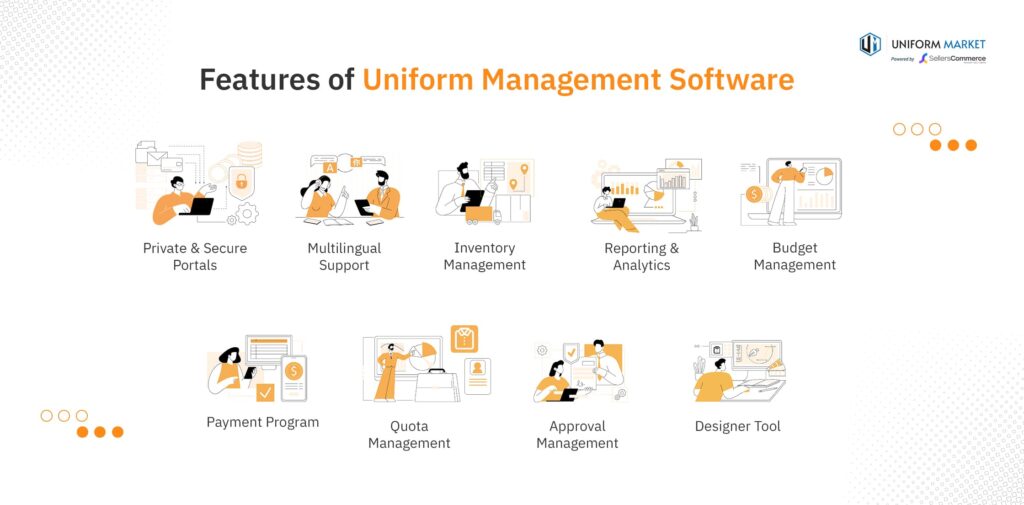Managing uniforms efficiently is a critical challenge for businesses that require standardized workwear, such as healthcare providers, corporate teams, hospitality staff, and industrial workers. Without a streamlined process, uniform procurement, distribution, and compliance can become time-consuming, error-prone, and costly. This is where a Uniform Management System (UMS) becomes essential.
A Uniform Management System is a technology-driven solution that simplifies uniform procurement, inventory tracking, budgeting, and compliance. It enables businesses to automate orders, track employee allotments, uniform policies, and optimize costs.
But not all UMS platforms are created equal. To maximize efficiency and meet the needs of your organization, you need a feature-rich system tailored to uniform providers, distributors, and large enterprises. The right system should offer secure portals for employees and administrators, automated approval workflows, budget control, real-time inventory tracking, and seamless enterprise integrations.
Whether you are looking to implement a new system or upgrade an existing one for your uniform business, we’ll help you explore 9 must-have features that will help you choose the right tool for your business.
Let’s dive into the key functionalities of UMS and how they can transform the way uniforms are managed across your organization.
Key Features of Uniform Management Software
Uniform management software streamlines uniform tracking, inventory management, and employee allocations, and cost saving. Some of the key features include real-time inventory tracking, automated ordering, and seamless integration.
Now, let’s explore the essential features to find the right system for your business needs.
- Private & Secure Portals
- Multilingual Support
- Inventory Management
- Reporting and Analytics
- Budget Management
- Payment Program
- Quota Management
- Approval Management
- Designer Tool

Comparison of Uniform Management System Features
Use the quick-reference table given below to evaluate key features every modern Uniform Management System should offer. Whether you’re switching platforms or starting fresh, ensure your chosen UMS checks all the boxes. Have a look:
| S.No | Feature | Why Does It Matters? |
| 1 | Private & Secure Portals | Protects sensitive employee data and enables personalized access |
| 2 | Multilingual Support | Enables global reach and user-friendly experience for diverse teams |
| 3 | Inventory Management | Prevents stockouts and overstocking, ensuring fulfillment consistency |
| 4 | Reporting & Analytics | Provides data-driven insights to improve budgeting and usage |
| 5 | Budget Management | Controls spend and allocates resources across departments |
| 6 | Payment Program | Simplifies the transactions |
| 7 | Quota Management | Regulates uniform issuance based on role or policy |
| 8 | Approval Management | Prevents unauthorized orders and ensures hierarchical accountability |
| 9 | Designer Tool | Enables personalization and brand consistency |
1) Private & Secure Portals
Employees access a secure portal with login credentials, ensuring only authorized personnel can view, order, and manage uniforms, preventing unauthorized purchases or security breaches.
- Each group store is protected by a password, so only the authenticated user can only access it.
- Enable Single Sign-On (SSO) to login to the account using existing corporate credentials.
- Allow specific employees or departments to view only those uniforms allocated and accessories and even pricing too.
- B2B master account lets you create as many client accounts as your business needs, accessing to the admin functions and controlled by the Master account.
In a healthcare setting, a nurse in pediatrics might only see soft-colored scrub tops with hospital logos, while a surgical person would only have access to sterile-approved attire. This avoids confusion and improves their ordering experience.
2) Multilingual Support
Over 43.7% of uniform businesses are expected to adopt multilingual platforms by 2030. Look for a uniform management software that supports multiple languages, helping the uniform businesses to expand globally.
A multilingual platform eliminates communication barriers, enabling every employee to easily navigate the system and place orders. It not only improves user satisfaction and reduces errors; but also builds a strong global presence for the uniform businesses.
If you own a uniform store specific to the Canada location and want to expand its operations to other places like Ohio, New York, or New Jersey, ensure the UMS you choose has multi-language support. This makes your task easier, else it will be challenging. It further helps to streamline the processes for users across global nations with improved efficiency.
“You can’t go global with a monolingual mindset. Multilingual UMS platforms are the foundation of scalable uniform distribution across nations.”

3) Inventory Management
Maintain real-time stock visibility to avoid stockouts and ensure employees can access the uniforms whenever they need.This ensures your team is never left waiting due to stockouts.
- ERP Integration: Look for systems that integrate with your ERP to ensure end-to-end stock visibility across locations. With UMS, managers can make faster restock decisions and keep uniform availability consistent across departments.
- Auto Reorder: Automatically restocks uniforms when inventory gets low, so your team always has what they need without delays.
- Master Profiles: Helps the uniform suppliers by creating a master profile to clone settings as required to new employees.
A medical scrubs manufacturer selling items online can track the styles, sizes, colors, and the quantity available. If incase, the inventory levels drop below a set threshold, automated alerts triggers and reorders; preventing stockouts and delays.
This process eliminates the need for manual audits and ensures the medical scrub manufacturer to stay ahead of the curve in the cut-throat competition.
4) Reporting and Analytics
Most of the business owners are unaware of the full potential of the reporting and analytics for eCommerce businesses. With the help of reporting tools, uniform businesses can generate custom reports with endless possibilities based on the business requirements. Further, the admins can create reports, track employee leftover quotas, allowances, detailed order history, and spends, and monitor their overall uniform usage.
For example, reports showing employee leftover quotas can trigger automated email reminders. Additionally, spend tracking helps businesses keep budgets in check, while detailed reports by uniform type, gender, or role allow you to offer more personalized uniform suggestions.
“Uniform businesses have seen 6.5X growth in efficiency and sales with analytics & reporting tools.”
5) Budget Management
Managing the budget is the crucial step for any businesses, else it would end up in overspends and may result in huge loss. In order to overcome this, every workwear business must adapt to a uniform management system that also has budget management features. You can also check out the guide to the uniform management software on how it benefits uniform businesses.
These systems streamline budget allocation for employee uniforms and also prioritize employee satisfaction by maintaining the standards.
For instance, managing the uniform budget manually for aviation employees is a hectic task. A quick way is to embed UMS into your operational workflow. Having this will eliminate the manual efforts and focus more on allocating budget to the aviation employees based on their role or department.
Based on the type of business and the requirement, you can look for key features like:
- Pricing Rule Engine: You can set flexible pricing to specific products or customers by leveraging pricing rules.
- Allotments: Assign a number of uniforms a specific employee can purchase over a period.
- Payroll Deduction: This feature lets you deduct the purchased uniform order amount from the payroll.
- Allowance: The uniform businesses can set budgets and allowances to a specific employee or group. It helps them to purchase uniforms as per the set guidelines.
6) Payment Program
A payment program acts as a centralized system that helps manage and process payments. Opting for the payment programs that leverage on advanced technologies helps the employees to make monthly/quarterly/annually payments effortlessly.
For instance, the industrial businesses relying on the uniform management software make use of employee allowance, credit/debit cards, PayPal, Payroll Deduct, and more adhering to the industry compliances.
In the corporate sector, employees were given 10000 redeem points every month, which can further be used to purchase workwear accessories like shirts, aprons, footwear, etc.,. When an employee purchases the desired workwear accessories, the points will be automatically deducted from their account.
7) Quota Management
Quota management is designed to help uniform businesses efficiently manage how uniforms are distributed to employees. This employee uniform quota feature enables users to set quotas on what and how often employees can order uniforms, helping to control costs and streamline purchasing workflows. It is also possible to:
- Create flexible payment programs and product groups across the organization.
- You can even add products and bundles to multiple categories with master and client accounts through multi-store eCommerce.
- Update product information and pricing from a single database and share inventory across multiple stores.
For example, if a hospital provides lab technicians with 1 scrub top every 3 months and 2 pairs of scrub pants every 6 months, the system ensures each lab technician can only order within those limits and prevents over ordering.
8) Approval Management
While not every uniform business needs approval workflows, they are crucial for B2B managing employee uniform programs at scale. Approval management allows organizations to control who can place orders, what they can order, and when the orders are being processed.
It helps to create an approval set with one or more approvers. Whenever an employee places an order, the order will be sent to the approver and based on the final status, the employee will receive the order.
Especially in the corporate industry, purchase orders made by the employees might require more than one approval (say one from the scrum master and the other from the manager). That’s where the approval management feature comes into the picture.
First, the scrum master approves the orders placed by the employees in the organization and later sent to the manager for final approval. Once the employee makes a purchase order, the scrum master or the manager can review and approve uniform requests.
- Approver groups: Assign approvers to ensure the employees are ordering uniforms within their allowed budget.
- Supervisor purchases: Assign supervisors or managers to purchase on behalf of a specific employee or group.
- Product groups: Seamlessly assign the group products to specific employees or employee groups.
Out and out, look for platforms that have the ability to set the standard hierarchy approval levels for your uniform businesses. This layer of control helps reduce errors, prevents unauthorized purchases, and keeps the uniform program aligned with budget and brand standards.
9) Designer Tool
Having a designer tool helps the uniform businesses to add a personal touch to the professional uniforms. Be it adding a logo, employee name, or designation on the uniform, you can do so with the help of designer tools. It gives a professional attire and builds trust too.
For example, adding a name, designation, and hospital logo for the doctors, nurses, lab technicians makes it easy to recognize them and avoid confusion.
Bottom Line
On the whole, a robust Uniform Management System (UMS) is necessary for uniform providers, distributors, and B2B clients managing large-scale workforce apparel programs. From secure employee portals and multilingual support to budget management, real-time inventory tracking, and approval workflows, each feature plays a pivotal role in streamlining operations, ensuring compliance, and enhancing the overall user experience.
Whether you’re supplying uniforms to healthcare, corporate, or industrial sectors, the right system ensures you stay ahead of demand while maintaining control over costs, branding, and quality. Now is the time to future-proof your uniform business with smarter systems that deliver measurable results.
| Ready to streamline your uniform business operations? Book a free demo to know more about the UniformMarket’s UMS features and see how we can transform your uniform business. |






